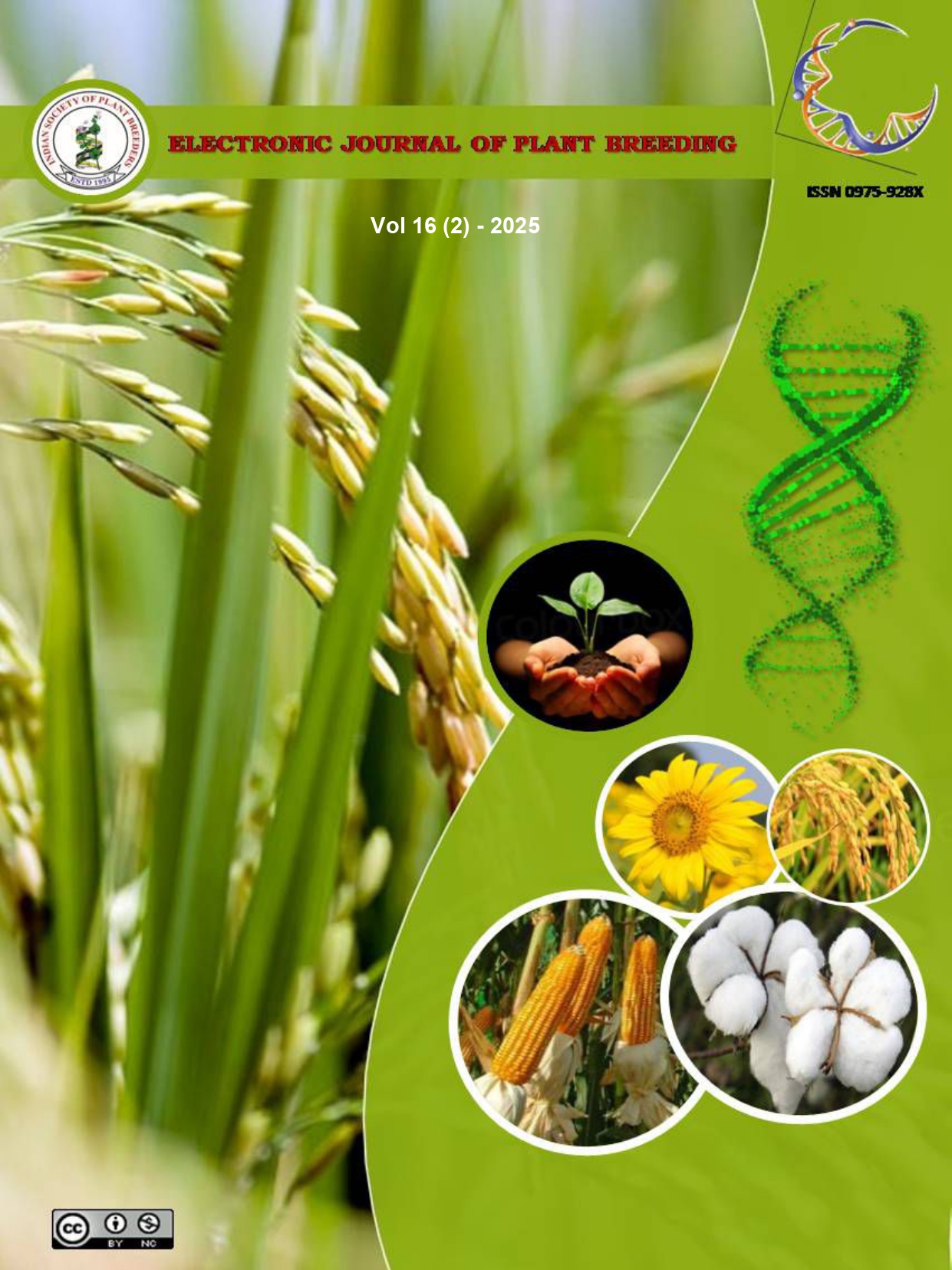Study on gene action of yield and its attributes in rice (Oryza sativa L.) under phosphorus-deficient conditions using Griffing’s approach
DOI: 10.37992/2025.1602.026
Abstract
Phosphorus (P) deficiency drastically limits rice production in tropical soils, necessitating the development of P-efficient varieties. The present study evaluated the combining ability of eight rice parents and their 28 F1 hybrids, which were produced from a half-diallel cross, at the UBKV Research Farm in West Bengal during Kharif 2021–2023 under deficient P soil condition. The experiment was laid out in a randomized block design with three replications and genotypes evaluated for 14 yield related traits. Combining ability was analyzed using Griffing’s Method II, Model I, to estimate general (GCA) and specific (SCA) combining ability effects. Significant genetic variation was observed, with GCA exceeding SCA for traits like plant height and grains per panicle, indicating strong additive effects, while SCA dominated for P uptake and yield, suggesting non-additive contributions. Parents like MTU 7029 and Ranjit appeared as superior combiners, while crosses such as CR Sugandh Dhan 909 × BBII and Paolum Sali × Ranjit exhibited high hybrid vigor. Dominance variance surpassed additive variance across traits, favoring hybrid breeding strategies. These findings indicate prospective parents and crosses that can improve rice production and P-use efficiency in low-P soils, especially in the Terai Zone of West Bengal.
Keywords: Rice, combining ability, diallel, phosphorus, GCA, SCA
Study on gene action of yield and its attributes in rice Oryza sativa L. under phosphorus-deficient conditions using Griffing’s approach
. 2025. Electronic Journal of Plant Breeding, 16 2, 143-153. Retrieved from https://ejplantbreeding.org/index.php/EJPB/article/view/5314It is certified that:
- The corresponding author is fully responsible for any disputes arising due to the publication of his/her manuscript.
- The article has been seen by all the authors who are satisfied with its form and content.
- The sequence of names of authors in the by-line is as per their relative contribution to this experiment, giving due credit to all scientists who made notable contribution to it.
- All the authors fully understand that inclusion of any other co-authors or exclusion of any co-authors is not possible once the article has been submitted to the journal.
- The corresponding author takes full responsibility for this article.
- The address of the organization where the research was conducted is given.
- The article is exclusive for this journal, and the results reported here have not been sent (and will not be sent during its consideration by this journal) for publication in any other journal.
- Authors agree to abide by the objective comments of referees and do agree to modify the article into a short note as per the recommendation, for publication in the Electronic Journal of Plant Breeding.
- If published in Electronic Journal of Plant Breeding, the copyright of this article would vest with the Indian Society of Plant Breeders, who will have the right to enter into any agreement with any organization in India or abroad engaged in reprography, photocopying, storage and dissemination of information contained in it, and neither we nor our legal heirs will have any claims on royalty.



